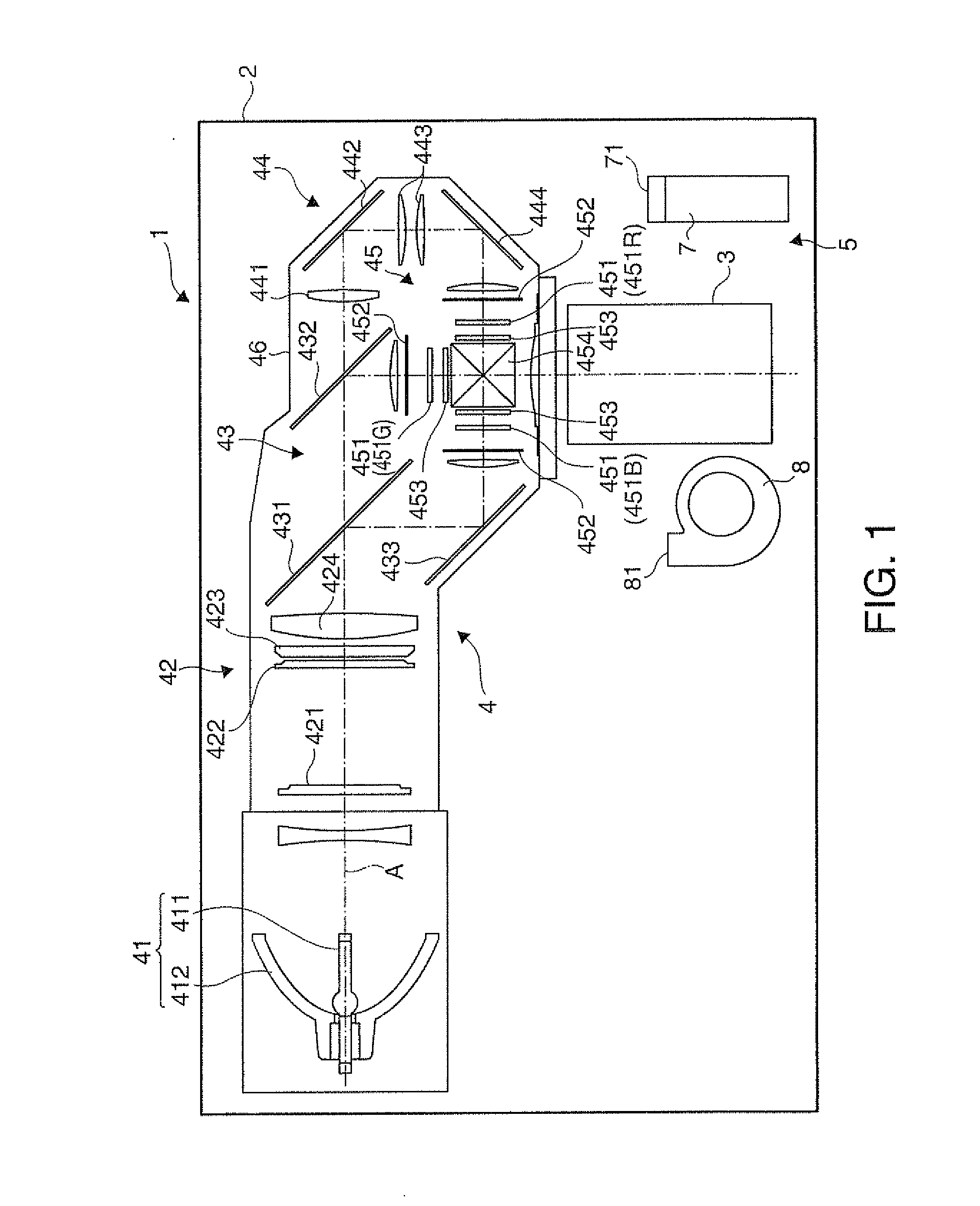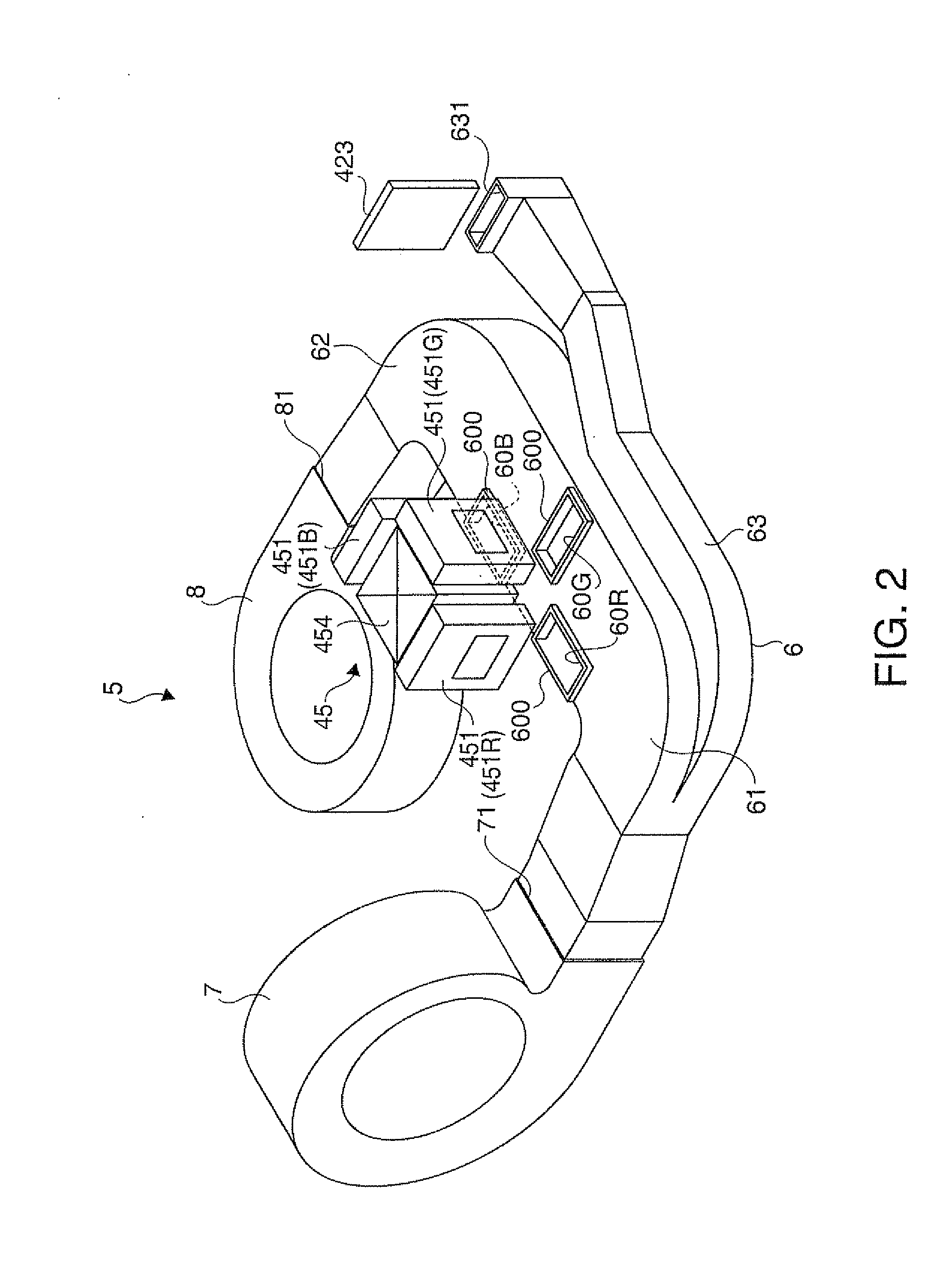Projector
a projector and projector technology, applied in the field of projectors, can solve the problems of reducing the flow speed of the projector, unable to supply the cooling target in a preferable condition with sufficient flow of cooling air, and unable to achieve the effect of cooling the cooling target in a preferable condition, so as to achieve the effect of improving the efficiency of cooling the cooling targ
- Summary
- Abstract
- Description
- Claims
- Application Information
AI Technical Summary
Benefits of technology
Problems solved by technology
Method used
Image
Examples
embodiment
Modification of Embodiment
The invention is not limited to the embodiment described herein but may be practiced otherwise without departing from the scope of the invention. Therefore, modifications, improvements and the like including the following changes may be made.
According to this embodiment, the cooling targets are cooled by the two cooling fans 7 and 8. However, the number of the cooling fans for cooling the cooling targets may be three or more.
According to this embodiment, the cooling airs A2 and B2 collide with each other at the position of the green light section cooling outlet port 60G in directions opposed to each other. However, the cooling airs A2 and B2 may collide with each other in other directions.
According to this embodiment, the cross-sectional area S of the first duct portion 61 and the second duct portion 62 is decreased in the direction toward the green light section cooling outlet port 60G by providing the inclined portion 66. However, the cross-sectional area...
PUM
 Login to View More
Login to View More Abstract
Description
Claims
Application Information
 Login to View More
Login to View More - R&D
- Intellectual Property
- Life Sciences
- Materials
- Tech Scout
- Unparalleled Data Quality
- Higher Quality Content
- 60% Fewer Hallucinations
Browse by: Latest US Patents, China's latest patents, Technical Efficacy Thesaurus, Application Domain, Technology Topic, Popular Technical Reports.
© 2025 PatSnap. All rights reserved.Legal|Privacy policy|Modern Slavery Act Transparency Statement|Sitemap|About US| Contact US: help@patsnap.com



